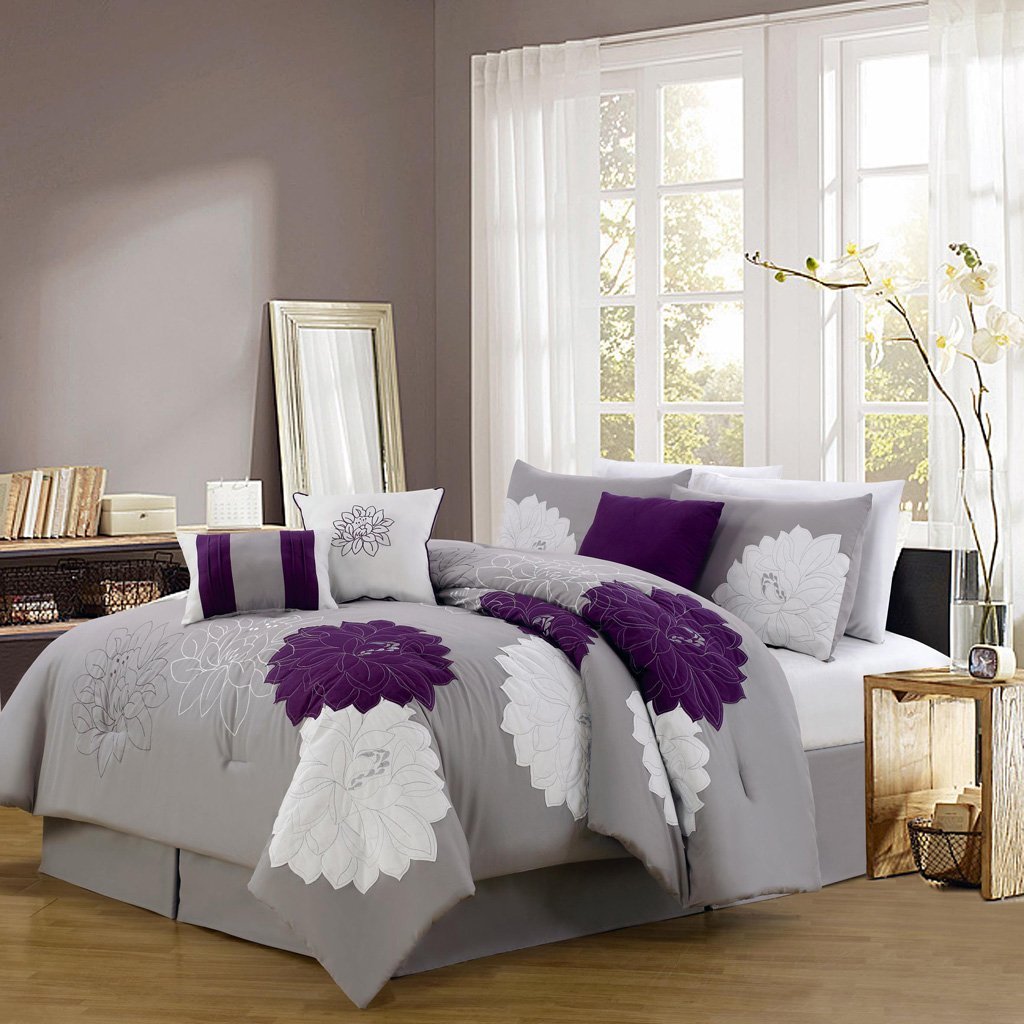Purple: a color associated with royalty, creativity, and spirituality. Its versatility allows it to create moods ranging from sophisticated and moody to vibrant and playful. This comprehensive guide unveils the secrets to harnessing purple’s power, offering a spectrum of color pairings to transform any space. Discover complementary pairings for red for further color inspiration.
Elevating Interiors with Purple: The Perfect Color Combinations
Purple’s magic lies in its adaptability. From deep, regal hues to soft, whimsical shades, it harmonizes with a surprising array of colors. This guide explores classic pairings, vibrant combinations, and monochromatic palettes, offering a wealth of design possibilities.
I. Purple + Neutrals: A Classic Foundation
Neutrals provide a sophisticated backdrop, allowing purple to take center stage.
- Black: This dramatic duo exudes elegance. Imagine deep plum walls with sleek black furniture—a truly luxurious statement. (Explore black and white room ideas for inspiration).
- White: The crisp contrast of white amplifies purple’s vibrancy. Lavender walls with white trim and bedding create a serene and airy bedroom. (Discover more about white room decor).
- Gray (Cool): A calming choice, cool gray softens purple’s intensity. A cool gray living room with violet accents in cushions and artwork achieves modern sophistication. (Find gray room inspiration here).
- Taupe: This warm neutral grounds purple with a touch of earthiness. A light mauve bedroom with taupe rugs and curtains creates a cozy retreat. (Explore taupe color palettes).
- Silver: Add a touch of glamour with silver. The metallic sheen complements deeper purples like amethyst and eggplant beautifully, creating a luxurious feel. (Discover silver decor ideas).
II. Purple + Vibrant Colors: Energetic Pairings
Beyond neutrals, purple thrives alongside vibrant hues.
- Emerald Green: A showstopping combination, these jewel tones evoke luxury and vibrancy, particularly in formal spaces. (Explore emerald green room designs).
- Turquoise: This playful pairing injects energy into any space. Lavender walls with turquoise accents create a cheerful children’s bedroom. (Find turquoise room inspiration here).
- Burnt Orange: The warm, earthy tones of burnt orange offer a stunning contrast to purple’s coolness. This unexpected pairing feels both inviting and unique. (Explore burnt orange color schemes).
- Ash Blue: For a subtler pop of color, ash blue and purple harmonize beautifully, creating a calming and sophisticated atmosphere. (Discover ash blue room ideas).
III. Monochromatic Magic: Exploring Shades of Purple
Don’t shy away from combining different shades of purple. Lavender walls, lilac bedding, and a plum rug create a cohesive yet visually interesting bedroom. (Learn more about monochromatic color schemes).
Choosing the Right Complementary Color for Purple
The ideal color pairing depends on the shade of purple and the intended mood. Some experts believe that complementary colors, those opposite each other on the color wheel, offer the most striking results. However, personal preference is paramount.
Orange & Yellow: The Power of Complementary Colors
Orange and yellow, purple’s complementary colors, create vibrant and energetic palettes. This contrast can be powerful, so consider using these colors strategically as accents. (Explore orange and yellow color combinations).
Green & Brown: Harmonious and Earthy Pairings
Green, an analogous color, offers a more harmonious, natural feel. Brown adds warmth and grounding, ideal for creating cozy spaces. (Discover green and brown room designs).
Black, White, & Gray: Classic and Versatile
These timeless neutrals create elegant and sophisticated backdrops for purple, offering versatility for various design styles. (Find black, white, and gray room inspiration).
Blue and Purple: A Harmonious Contrast
Blue and purple, often found together in nature, create a visually appealing contrast. The specific shades chosen determine the overall vibe, from energetic and bold to serene and airy. Triadic color schemes, incorporating a third color like red or orange, can further enhance these pairings. (Explore blue and purple color combinations).
Violet’s Complementary Color: Green and Beyond
While green is violet’s primary complementary color, other harmonious pairings exist. Blues, pinks, and even reds, oranges, and yellows can complement violet depending on the specific shades. Remember, color perception is subjective, and ongoing research in color psychology suggests our interpretations are influenced by various factors. Experimentation is encouraged! (Discover more about violet and green pairings).
Tips for Decorating with Purple
- Consider the Shade: Lighter purples evoke calmness, while deeper shades create drama.
- Set the Mood: Purple can create a range of atmospheres.
- Neutral Base: Start with a neutral base and add purple accents.
- Texture Play: Incorporate various textures for added depth.
- Trust Your Instincts: Experiment and find what resonates with you.
Purple in Different Settings
- Seasonal Palettes: Lavender for spring, deep violet for autumn.
- Room-Specific Guidance: Consider the function and mood of each space.
- DIY Projects: Incorporate purple through painting and textiles.
- Addressing Challenges: Avoid overwhelming small spaces with dark purples.
This guide provides a foundation for understanding purple’s versatility. By considering these color combinations, design tips, and ongoing color theory research, you can confidently incorporate this regal hue into your spaces.
- How to Measure Your Belt Size (for Women): 3 Easy & Accurate Methods - April 27, 2025
- How to Remove Permanent Hair Dye From Hair: Safe & Effective Methods - April 27, 2025
- How to Remove Ink from Leather: Effective DIY Methods and Expert Tips - April 27, 2025










